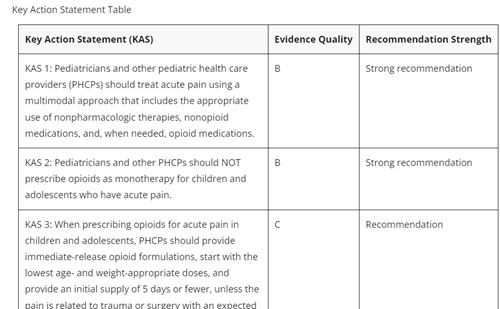In Brief | Paediatrics & Neonatology
American Academy of Paediatrics releases the first clinical guidelines for opioid prescriptions in children with acute pain
Time to read: 01:44 minutes
Time to listen: 03:43 minutes
Originally Published: 30 August 2024
Sourced: Pediatrics
Type of article: In Brief
MedED Catalogue Reference: MPIB0015
Category: Paediatrics & Neonatology
Cross Reference: Pain Medicine, Guidelines, Addiction Medince
Keywords: paediatrics, pain control, opioids, addiction medicine
Top
Originally published: Paediatrics, 30 September 2024. Summary of technical report as presented at the American Academy of Paediatrics Annual Meeting held between 26-30 September 2024
Presented at the Academy's Annual meeting last month, the guidelines provide a comprehensive, evidence-based approach to help clinicians treat pediatric pain safely and effectively while minimising the risk of addiction and overdose. The AAP’s recommendations aim to standardise pain management practices across various medical specialities and settings.
Back to top
Disclaimer
This article is compiled from several resources researched and compiled by the contributor. It is in no way presented as an original work. Every effort has been made to attribute quotes and content correctly. Where possible all information has been independently verified. The Medical Education Network bears no responsibility for any inaccuracies which may occur from the use of third-party sources. If you have any queries regarding this article contact us
Fact-checking Policy
The Medical Education Network makes every effort to review and fact-check the articles used as source material in our summaries and original material. We have strict guidelines in relation to the publications we use as our source data, favouring peer-reviewed research wherever possible. Every effort is made to ensure that the information contained here is an accurate reflection of the original material. Should you find inaccuracies, out of date content or have any additional issues with our articles, please make use of the contact us form to notify us.



